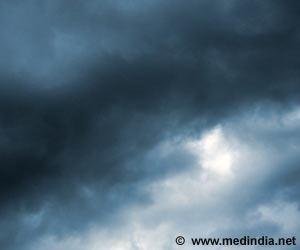A new climate modeling study has indicated that the South Asian summer monsoon, which is critical to agriculture in India, Pakistan, Bangladesh and Nepal, could be weakened and
By the turn of this century, rising temperatures caused as a result of global warming may delay and even weaken the South Asian summer monsoon. So predicts a new climate modeling study which has indicated that this effect may adversely affect agriculture in India, Pakistan, Bangladesh and Nepal.
The study, by a Purdue University research group, found that climate change could influence monsoon dynamics and cause less summer precipitation, a delay in the start of monsoon season and longer breaks between the rainy periods.According to Noah Diffenbaugh, whose research group led the study, the summer monsoon affects water resources, agriculture, economics, ecosystems and human health throughout South Asia.
"Almost half of the world's population lives in areas affected by these monsoons, and even slight deviations from the normal monsoon pattern can have great impact," said Diffenbaugh.
"Agricultural production, water availability and hydroelectric power generation could be substantially affected by delayed monsoon onset and reduced surface runoff," he added.
Alternatively, the model projects increases in precipitation over some areas, including Bangladesh, which could exacerbate seasonal flood risks.
The summer monsoons are responsible for approximately 75 percent of the total annual rainfall in major parts of the region and produce almost 90 percent of India's water supply.
Advertisement
The research team used a high-resolution climate model believed to have the greatest detail currently available for this region.
Advertisement
"It highlights the importance of spatial complexity in the climate response and suggests that understanding the potential impacts of future climate change in this region requires improved understanding of a host of climate processes," he added.
The model projected a delay in the start of monsoon season from five days to 15 days by the end of the 21st century and an overall weakening of the summer monsoon precipitation over South Asia.
According to Ashfaq, increasing temperatures in the future strengthen some aspects of large-scale monsoon circulation, but weaken the fine-scale interactions of the land with the moisture in the atmosphere, which could lead to reduced precipitation over the Indian subcontinent.
The model shows an eastward shift in monsoon circulation, which would mean more rainfall over the Indian Ocean, Bangladesh and Myanmar, and less over India, Nepal and Pakistan.
Source-ANI
TAN/L









